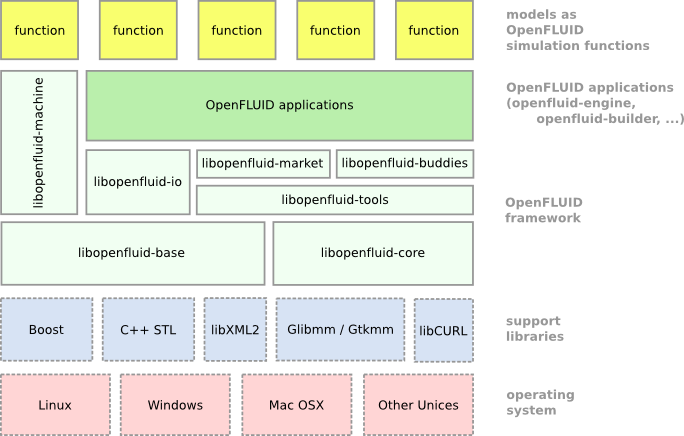

The OpenFLUID libraries features are gathered together into the openfluid namespace, which is made of several parts. The three main parts are:
These libraries mainly rely on external libraries:

The OpenFLUID framework provides a plugin interface for creating functions that can be used by any OpenFLUID software application.
This involves the following classes and structures (non-exhaustive list):
In order to store and manage all the data handled to represent the spatial domain and the simulation information, the OpenFLUID framework defines a data structure for spatio-temporal data management.
This involves the following class (non-exhaustive list):
Models can be parameterized using functions parameters at simulation function level, or using input data associated to spatial units. This involves the following classes and structures (non-exhaustive list):
The simulation variables can be of any defined type. A date is associated to each value of simulation variables. Simulation functions can also handle discrete events, associated to spatial units. This involves the following classes and structures (non-exhaustive list):
This involves the following classes and functions (non-exhaustive list):
The FortranCPP.h header file make Fortran code encapsulation (into simulation functions) easier.
 Creative Commons By-NC-ND license
Creative Commons By-NC-ND license